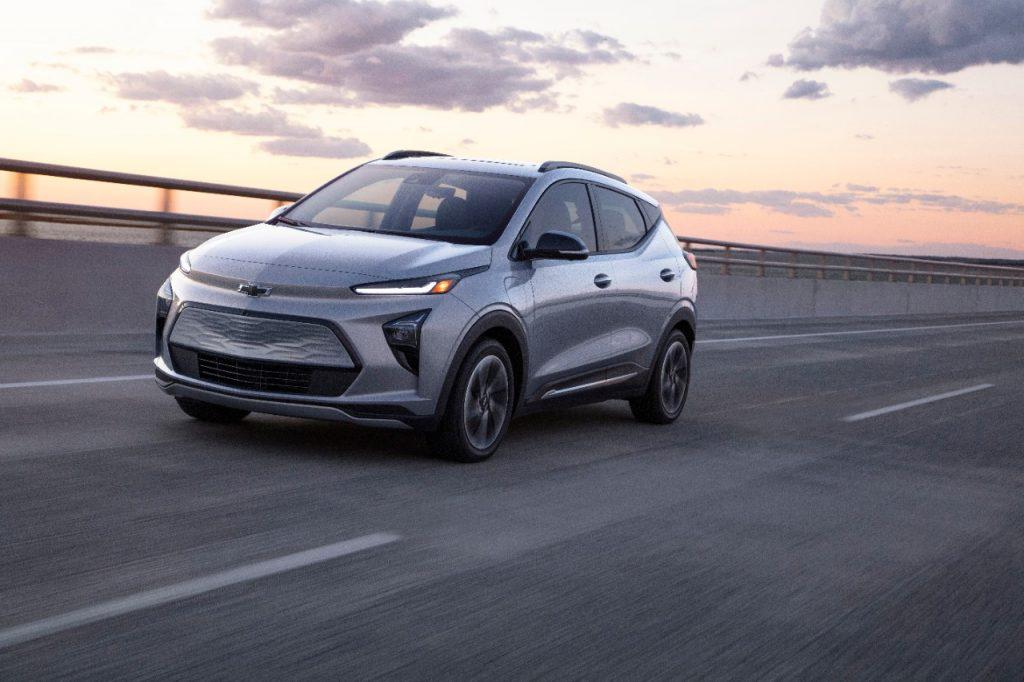Teslas are probably top-of-mind for you if you're thinking about buying an electric vehicle, and for good reason. They're stylish, high-tech vehicles with great performance and impressive EPA range estimates. But they're not the only EVs to consider. If you're looking for an inexpensive electric vehicle, the 2022 Chevrolet Bolt EUV is worth considering. In fact, we can think of five reasons why the Bolt EUV is a better choice than the entry-level 2021 Tesla Model 3.
Bolt EUV is less expensive than the Model 3
The Bolt EUV starts at $33,995 (destination fee included), while the Tesla Model 3 Standard Range Plus starts at $41,190 (destination fee included). That's a difference of $7,195. When comparing base trims, the added money for the Tesla gets you things such as faux leather seating, onboard navigation, heated seats, larger wheels and a few other items. But the top Premiere trim level on the Bolt EUV will land you many of those options plus cooled seats and still cost less than a base Model 3. And if you wait a few months, there's a good chance you'll see manufacturer incentives on the Bolt EUV, which could save you even more money. Tesla, on the other hand, does not offer incentives.
Super Cruise costs less than "Full Self-Driving"
The advanced driving aids from Chevrolet and Tesla seek to reduce the effort of driving via automation, but neither Chevy's Super Cruise nor Tesla's Full Self-Driving Capability is truly autonomous. Still, they are impressive systems that are well worth considering for prospective customers. You need to get the top Premiere trim on the Bolt EUV to have access to the $2,200 Super Cruise package. Meanwhile, you can get the Full Self-Driving package on any version of the Model 3, but it costs $10,000. Even when you factor in the Premiere trim level on the Bolt EUV, it is still $9,295 less expensive than a Model 3 with the Full Self-Driving package. And in terms of functionality, Consumer Reports gave Super Cruise top marks in a 2020 ranking of active driving assistance systems.
Chevy has a better dealer network

Tesla has about 130 dealerships and about 120 service centers in the U.S. Compare that to Chevrolet's 4,200-plus dealerships nationwide, all with a service department. This gives you more flexibility to find the car you want or get it serviced if you move or travel and need repairs in other states.
More cargo space
On paper, the Bolt EUV barely has a larger cargo area than the Model 3 (16.3 cubic feet versus 15 cubic feet), but there's more to the story. The Bolt EUV's hatchback design is more cargo-friendly than the Model 3's conventional trunk. Some might say, "Well actually, if you need a hatchback, there's always the Model Y." They're not wrong, but you'd pay about $18,500 more for the cheapest Model Y compared to the base Bolt EUV.
Better potential real-world range
The Bolt EUV has an EPA-estimated range of 247 miles, while the Model 3 Standard Range Plus has an EPA estimate of 263 miles. But in the real world, we've seen quite different results. As of this writing, no Tesla we've tested has matched its EPA range estimate when driven on our real-world test loop — and we've tested quite a few. Meanwhile, the previous Bolt, which the 2022 Bolt EUV is heavily based on, was able to exceed its EPA rating by 7%, recording a 277-mile run on a single charge versus its EPA estimate of 259 miles. Stay tuned for our test of a Bolt EUV, but if it follows in the previous Bolt's footsteps, we expect its real-world range will be neck and neck with that of the base Model 3.
Edmunds says
The Bolt EUV may lack the coolness factor of the Model 3, but if you can get past its relatively mundane character, it's got a lot going for it. For all the latest ratings from our testing team, head over to the Edmunds EV rankings page.




